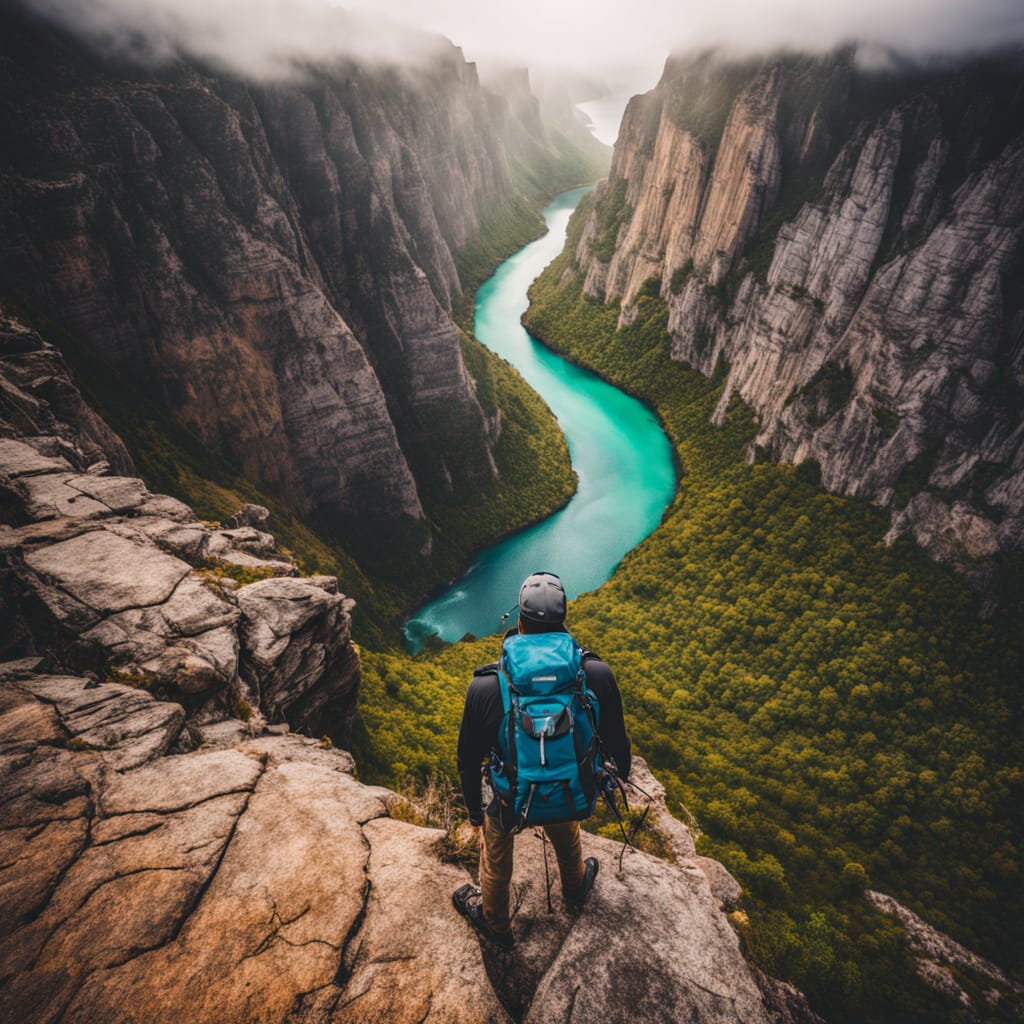Canyoning: Exploring the Thrills of Nature’s Playground

Canyoning, also known as canyoneering, is a thrilling outdoor activity combining adventure, skill, and nature exploration. It involves traversing canyons using a variety of techniques, including hiking, climbing, rappelling, swimming, and sliding. This dynamic sport is growing rapidly in popularity, captivating adrenaline enthusiasts worldwide. It appeals to both professionals and amateurs, offering challenges for every skill level. This article delves into the origins, global reach, amateur engagement, professional leagues, societal impact, and rules of canyoning.
The Origins and History of Canyoning
The roots of canyoning trace back to exploration and survival. Early human settlements in mountainous regions required navigating canyons for resources or transportation. However, as technology evolved, it transitioned from necessity to recreation.
In the late 19th century, French explorers and geographers pioneered recreational canyoning. Édouard-Alfred Martel, often called the father of modern speleology, led notable explorations of limestone gorges in France. His work laid the foundation for canyoning as an adventurous activity.
The 20th century saw rapid advancements in equipment and techniques. By the 1980s, canyoning became a recognized sport, especially in Europe. Spain, Italy, and France embraced it, establishing dedicated groups and organizations. Today, it blends adventure tourism with sport, drawing participants from every continent.
Global Popularity of Canyoning
It is practiced across diverse terrains worldwide. Its popularity stems from the unique combination of physical challenge and nature immersion. Countries with mountainous regions have become global hotspots for canyoning.
In Europe, France and Spain lead the way. The Pyrenees and the Alps boast world-class canyons attracting international enthusiasts. Switzerland and Italy also offer thrilling descents through breathtaking landscapes.
New Zealand and Australia have established themselves as canyoning havens in the Southern Hemisphere. The Blue Mountains near Sydney and Fiordland National Park in New Zealand showcase stunning canyoning opportunities.
Asia is gaining recognition with destinations in Nepal, Japan, and the Philippines. The Himalayas, Japanese rivers, and tropical waterfalls offer unmatched variety. North America, particularly the United States, features the Zion National Park and the Colorado Plateau, which draw canyoners year-round.
South America and Africa are burgeoning markets. Chile’s Andes and South Africa’s rugged terrains contribute to canyoning’s global appeal. The sport’s adaptability to different landscapes ensures its growth remains robust.
Amateur Canyoning: Opportunities for Beginners and Youth
Amateur canyoning provides an excellent entry point into this adventurous sport. Many companies and organizations offer guided tours catering to beginners. Safety is prioritized, ensuring participants enjoy the activity without prior experience.
Youth and schools have embraced it as an educational and physical activity. It teaches teamwork, resilience, and environmental awareness. Outdoor education programs in countries like New Zealand and Switzerland incorporate canyoning into their curriculums. These initiatives aim to foster a love for nature while building essential life skills.
Local clubs and recreational groups organize amateur canyoning events. These gatherings help newcomers learn from experienced members, creating inclusive communities. The affordability and accessibility of guided canyoning trips contribute to its increasing popularity among families and youth groups.
Professional Canyoning Leagues and Competitions
While not as widely formalized as other sports, professional canyoning leagues and competitions exist. These events celebrate technical skill, speed, and creativity in navigating canyons.
Europe leads the professional scene, hosting renowned competitions. Events like the European Canyon League (ECL) bring together elite canyoners from across the continent. Athletes showcase mastery in rappelling, water navigation, and precision techniques.
In Asia, countries like Japan and South Korea are developing professional circuits. Regional tournaments focus on technical challenges and promote it as a spectator-friendly sport.
North America is catching up with an emphasis on adventure racing. Canyoning competitions are often part of multi-sport events, integrating orienteering and endurance. The inclusion broadens its appeal while pushing professional standards.
These leagues not only highlight individual talent but also elevate the sport’s global profile. Partnerships with sponsors and media outlets help attract new enthusiasts.
Social and Political Significance of Canyoning
It holds immense social and political significance. On a social level, it fosters community building and environmental stewardship. Participants develop a deep appreciation for nature and advocate for conservation efforts. Guided tours often include discussions about local ecosystems, encouraging sustainable tourism.
Politically, it drives eco-tourism in many regions. Governments recognize its potential to boost local economies while promoting environmental awareness. In countries like Nepal and Chile, it contributes to sustainable development, balancing economic growth with ecological preservation.
Moreover, the sport unites diverse communities. Cross-cultural exchanges during international canyoning events strengthen global connections. It bridges gaps and fosters friendships, transcending geographical and cultural boundaries.
Understanding the Rules of Canyoning
Canyoning rules emphasize safety, respect for nature, and teamwork. Participants must follow specific guidelines to ensure an enjoyable experience.
- Safety First:
Wearing appropriate gear, such as helmets, wetsuits, and harnesses, is mandatory. Teams must carry first-aid kits and emergency equipment. - Environmental Respect:
Participants should follow Leave No Trace principles. This includes avoiding littering, staying on designated paths, and minimizing impact on wildlife. - Teamwork and Communication:
Effective teamwork is essential. Clear communication, especially during technical descents, ensures everyone stays safe. - Navigation Techniques:
Mastering techniques like rappelling, swimming, and scrambling is vital. Beginners should practice under supervision before attempting advanced routes. - Weather Awareness:
Checking weather conditions is critical. Sudden rain can lead to flash floods, making canyons hazardous.
Adhering to these rules not only ensures safety but also preserves the sport’s integrity.
Conclusion
Canyoning is a sport that blends adventure, skill, and a deep connection with nature. Its origins as a means of exploration have transformed into a global phenomenon. From amateur enthusiasts to professional leagues, canyoning continues to captivate individuals worldwide. The sport’s social and political significance highlights its role in promoting conservation and unity.
Whether you’re a beginner or a seasoned professional, canyoning offers endless opportunities for exploration. Its unique combination of challenge and beauty ensures its place among the most exhilarating outdoor activities. Dive into the world of canyoning, and discover the thrill of nature’s playground!

